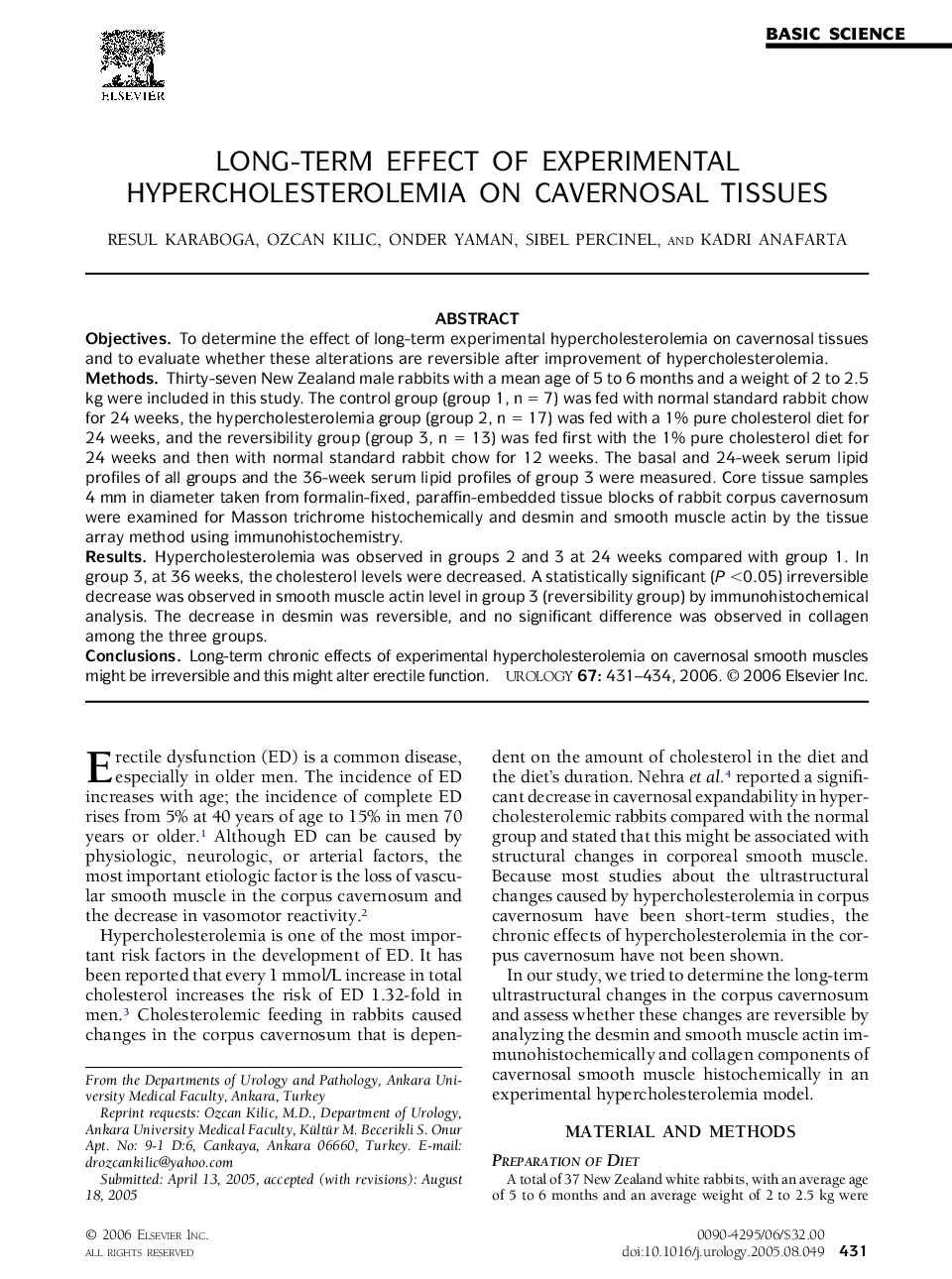| Article ID | Journal | Published Year | Pages | File Type |
|---|---|---|---|---|
| 3906820 | Urology | 2006 | 4 Pages |
ObjectivesTo determine the effect of long-term experimental hypercholesterolemia on cavernosal tissues and to evaluate whether these alterations are reversible after improvement of hypercholesterolemia.MethodsThirty-seven New Zealand male rabbits with a mean age of 5 to 6 months and a weight of 2 to 2.5 kg were included in this study. The control group (group 1, n = 7) was fed with normal standard rabbit chow for 24 weeks, the hypercholesterolemia group (group 2, n = 17) was fed with a 1% pure cholesterol diet for 24 weeks, and the reversibility group (group 3, n = 13) was fed first with the 1% pure cholesterol diet for 24 weeks and then with normal standard rabbit chow for 12 weeks. The basal and 24-week serum lipid profiles of all groups and the 36-week serum lipid profiles of group 3 were measured. Core tissue samples 4 mm in diameter taken from formalin-fixed, paraffin-embedded tissue blocks of rabbit corpus cavernosum were examined for Masson trichrome histochemically and desmin and smooth muscle actin by the tissue array method using immunohistochemistry.ResultsHypercholesterolemia was observed in groups 2 and 3 at 24 weeks compared with group 1. In group 3, at 36 weeks, the cholesterol levels were decreased. A statistically significant (P <0.05) irreversible decrease was observed in smooth muscle actin level in group 3 (reversibility group) by immunohistochemical analysis. The decrease in desmin was reversible, and no significant difference was observed in collagen among the three groups.ConclusionsLong-term chronic effects of experimental hypercholesterolemia on cavernosal smooth muscles might be irreversible and this might alter erectile function.
